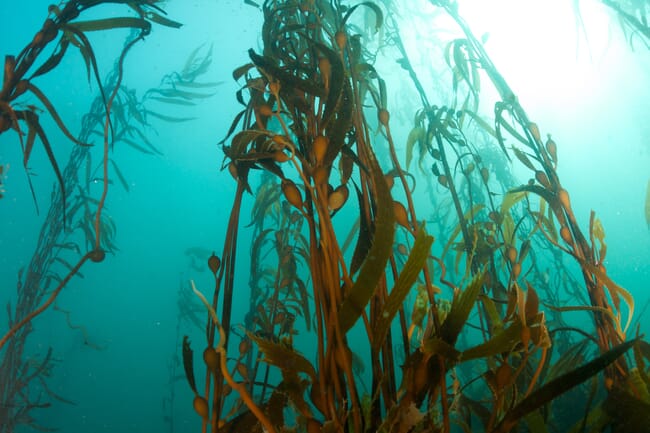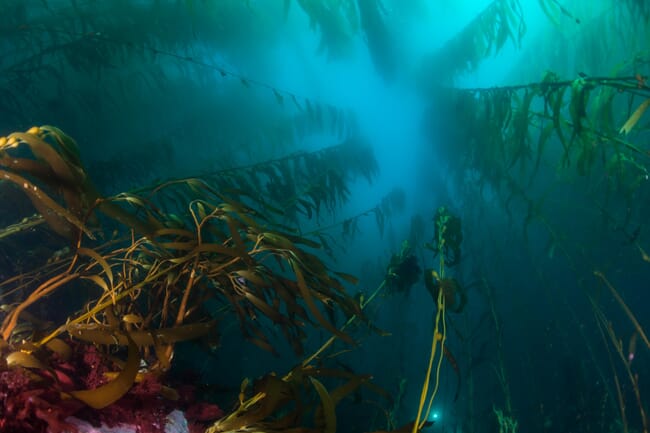
The study's lead author Dr Albert Pessarrodona states the findings show the climate benefits of these underwater forests may have been “grossly underestimated” © Keith A. Ellenbogen / Conservation International
Published in Biological Reviews, the study estimates that the protection, restoration, and improved management of kelp and seaweed forests globally could provide mitigation benefits in the range of 36 million tons of CO2 – equivalent to the CO2 capturing capacity of 1.1-1.6 billion trees. Importantly, the study also introduces a framework to accurately categorise, quantify, and verify carbon sequestration in kelp and seaweed forests.
Lead author Dr Albert Pessarrodona, from The University of Western Australia and the International Blue Carbon Institute, stated the findings show we may have “grossly underestimated” the climate benefits of these underwater forests. One key reason for this underestimation is the existence of several knowledge gaps, which are now being addressed through mapping efforts and the publication of this research that assesses the forests' varying ability to store carbon in the long term.
Dr Pessarrodona, who is also a post-doctoral researcher at Conservation International, said in a press release: "Globally, kelp and seaweed forests sequester as much carbon as the Amazon rainforest, but only a fraction of that is stored in coastal sediment and the deep sea. Estimating the amount of carbon sequestered by these forests has proven challenging to date. However, this research introduces a new framework that can help us act swiftly to harness the carbon sequestration potential of kelp and seaweed forests."

© Alan Friedlander / Conservation International
Through this categorisation, the study finds:
- Conservation, restoration, and afforestation efforts targeting kelp and seaweed forests could result in the removal of tens of millions of CO2 per year globally, offering feasible climate mitigation actions.
- Kelp and seaweed forests in proximity to fjords, canyons, oceanic islands, or the deep sea exhibit higher carbon sequestration potential. This is particularly evident in temperate regions where the cool nutrient-rich waters support the tallest forest growth and the most carbon fixation.
- As a result, polar and temperate countries that have yet to engage in blue carbon solutions may soon have the opportunity to do so. For instance, the study identifies the Great Southern Reef along the Australian coastline and the underwater forests of Eastern Canadian Arctic, Norway, and Japan as areas with high carbon sequestration potential.
Dr Emily Pidgeon, Conservation International’s lead for oceans and co-author of the study, emphasised the urgent need for action. "Seaweed forests are disappearing at alarming rates in many parts of the world due to various human pressures, including nutrient pollution, marine heatwaves, and ocean warming," she warned.
"To prevent the loss of valuable carbon removal capacity from the ocean and to safeguard the numerous other benefits provided by seaweed forests, we must halt these declines."
The findings of this study underscore the critical role that kelp and seaweed forests can play in addressing climate change. By recognising their carbon sequestration potential and implementing measures for their conservation, restoration, and improved management, we can unlock a significant climate mitigation tool while preserving the multiple benefits these underwater forests offer to humanity.




